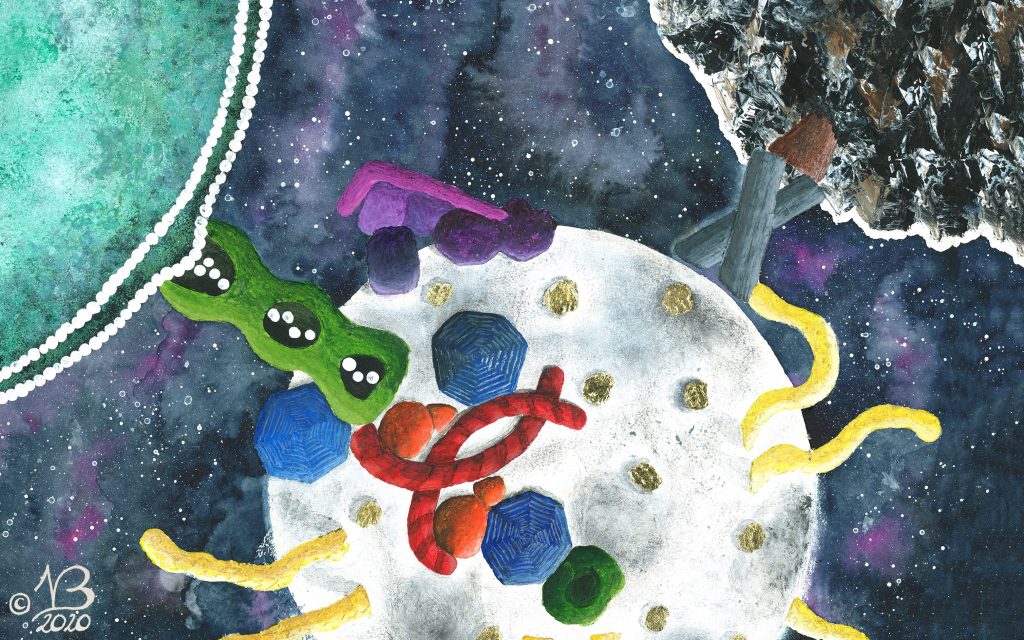September 4, 2020
Autophagy: the beginning of the end
Autophagy, from the Greek for ‘self-eating’, is an essential process that isolates and recycles cellular components under conditions of stress or when resources are limited. Cargoes such as misfolded proteins or damaged organelles are captured in a double membrane-bound compartment called the autophagosome and targeted for degradation. A fundamental question concerns precisely how these “garbage bags” form in the cell. Scientists led by Sascha Martens from the Max Perutz Labs, a joint venture of the University of Vienna and the Medical University of Vienna, have now reconstructed the first steps in the formation of autophagosomes. They show that tiny vesicles loaded with the protein Atg9 act as the seed from which the autophagosome emerges. The study is published in Science.
Autophagosomes first form as cup-shaped membranes in the cell, which then grow to engulf the cellular material designated for destruction. The formation of these membranes is catalyzed by a complex machinery of proteins. “We have a very good knowledge of the factors involved in autophagosomes formation”, explains group leader Sascha Martens, “but how they come together to initiate the formation of these membranes has so far been enigmatic”.
One of the factors is Atg9, a protein whose importance in the process was known, but whose role was not clear. Atg9 is found in small intracellular vesicles. Researchers Justyna Sawa-Makarska, Verena Baumann and Nicolas Coudevylle from the Martens lab now show that they form a platform on which the autophagy machinery can assemble to build the autophagosome.
Read the full story in the Max Perutz Labs News.
Publication:
Sawa-Makarska J, Baumann V, Coudevylle N, von Bülow S, Nogellova V, Abert C, Schuschnig M, Graef M, Hummer G, Martens S:
Reconstitution of autophagosome nucleation defines Atg9 vesicles as seeds for membrane formation.
Science. 2020 Sep 4.
https://doi.org/10.1126/science.aaz7714

An Atg9 vesicle serves as a platform for the recruitment of the autophagic machinery. It thereby forms a seed for the formation of an autophagosome around the cargo by accepting lipids that are transferred by the Atg2 protein from the neighbouring ER. © Verena Baumann